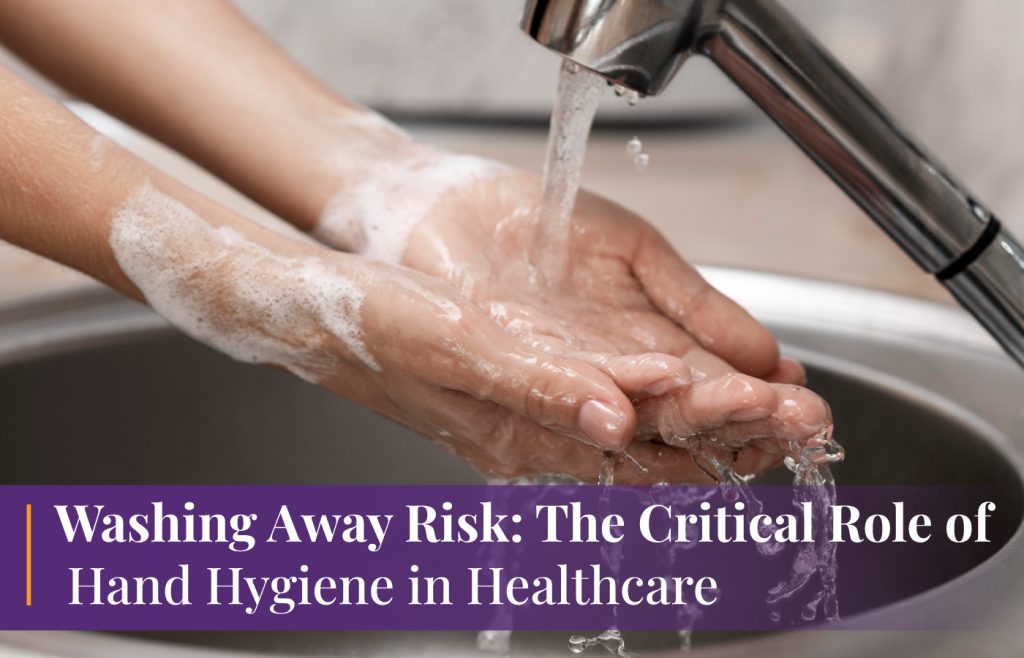Washing Away Risk: The Critical Role of Hand Hygiene in Healthcare

Hand hygiene is a fundamental practice for medical professionals, serving as the first line of defence against spreading infections in healthcare settings. Thorough hand hygiene improves patient safety and medical procedures, making it a crucial hospital practice. It is a simple and low-cost measure to reduce healthcare-associated infections.
Some Hard Facts:
Healthcare workers are often called ‘Handwashing Champions’, washing their hands potentially over 100 times during a 12-hour shift to prevent pathogen transmission. Despite the necessity, compliance rates are low, with studies showing only 42% of nurses and 38% of physicians follow handwashing guidelines.
As per UNICEF, people frequently touch their faces, food, and surfaces, hands play a significant role in spreading disease. Unsafe hand hygiene alone is responsible for 394,000 deaths from diarrhoea and 356,000 deaths from Acute Respiratory Issues. Hand hygiene can prevent many diseases and avoid significant financial costs from sickness and death.
In the healthcare industry, where the risk of spreading infections is high, hand hygiene is paramount, not just for patient safety but also for the safety of the facility, nurses, staff, and visitors. Maintaining rigorous hand hygiene is primarily the responsibility of healthcare professionals as they move through various critical areas within a facility.
Healthcare personnel ought to practice hand hygiene every day for various reasons.
The World Health Organization developed the 5 Moments of Hand Hygiene. The five moments of hand hygiene indicate when medical professionals, doctors or nurses should wash their hands to ensure the health and safety of everyone in their facility.
5 Moments of Hand Hygiene:
- Before touching a patient: When a doctor or nurse enters a patient’s room, it is vital to perform hand hygiene exercises to remove any pathogens acquired from previous activities. This step is necessary even if there is no direct contact with the patient, as touching objects that the patient may later touch could transmit harmful germs.
- Before clean/aseptic procedures: Before performing any medical procedures such as tests, drawing blood, administering IVs, or preparing for surgery, it is critical to practise hand hygiene. Patients tend to be highly vulnerable to harmful pathogens or germs at these times.
- After bodily fluid exposure/risk: After coming into contact with patients’ harmful bodily fluids, such as blood, saliva, urine, and faeces, healthcare professionals must practice proper hand hygiene to protect themselves and the patients they are caring for.
- After touching a patient: The healthcare provider must complete a hand hygiene exercise following interaction. The patient being cared for may carry germs that pose a risk to nurses, doctors, visitors, and other patients.
- After Touching the patient’s surroundings: Even if nurses and doctors have not had direct contact with patients, there is still a risk of cross-contamination. As a result, they are required to continuously wash their hands after coming into contact with patients to ensure the health and safety of everyone in the facility.
Read our blog: Discover the triggers, signs, and cures for conjunctivitis.
Conclusion
Healthcare professionals must adhere to the “5 Moments of Hand Hygiene” for a medical facility’s overall health and safety. However, handwashing in these situations can be time-consuming. Therefore, medical professionals often rely on instant hand sanitisers to save time while maintaining hygiene standards.

